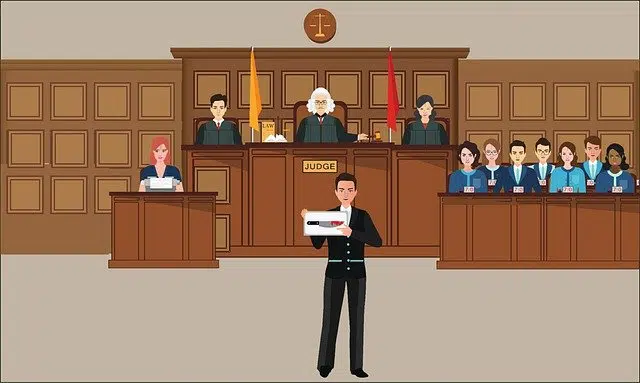
To prove the innocence or guilt of an accused, the argument must be based on irrefutable evidence.
The term argumentation , derived from the Latin word argumentatio , refers to the act of arguing : applying or expressing an argument. The idea of argument , meanwhile, refers to the reasoning that is pronounced to convince someone or as a test.
Draw conclusions
Argumentation is understood as the way in which, resorting to logic , conclusions are obtained. Argumentation is linked to dialogue and persuasion .
It is possible to relate argumentation to a negotiation when the aim is to reach conclusions acceptable to two or more parties. The argument, however, can also aim to impose itself on the other.
According to the theory of argumentation , these processes begin when there is a conclusion or a thesis about which the person intends to argue. This conclusion is reached through premises: the link between the premises and the conclusion must be evidenced with arguments.
Examples of argument
Political speech , advertising and a lawyer's presentation in front of a court , for example, are based on argumentation. Demonstration requires that the conclusion arise from objective facts and not from opinions.
Take the case of a presidential candidate who asks citizens to vote for him, claiming that he is the right individual to solve the country's problems. In his argument, he exposes the achievements of his management as governor of a province. According to his position, it is possible to extrapolate his provincial successes to a national level.
Now suppose that the lawyer for a man accused of murder asks for his client's acquittal. The lawyer's argument is based on a series of evidence that could demonstrate the innocence of the subject, who would not have been present at the crime scene.
In both examples, we see that the argument is a statement whose weight is considerable, since it has enough potential to cause a major change in a structure or a process . Choosing a president over other candidates or acquitting an alleged murderer are not trivial events, but very relevant, and to ensure that they take place it is necessary to rely on firm pillars, based on a series of evidence that is impossible to refute.
Structure
Below we will see three different elements that are part of the argument:
* conclusion : it can also be a thesis, and must be the objective of the argument itself;
* premises : they are the basis from which the conclusion is attempted to be inferred;
* argument : allows you to demonstrate the validity of the relationship between the previous elements.
Process
The argument presented can be explicit, but also implicit. Along with the objectives of the participants in an argument, they must be identified and understood. The same should happen with the premises and the conclusion. Likewise, the burden of proof must be determined, that is, who has the obligation to offer the necessary evidence to support their claim and get their point of view accepted.

Doubts or weaknesses in the arguments can serve as an opportunity for the opponent to attack with a counterexample.
The evidence must be put in order in order to persuade the opponent to accept it. But this is not an easy task; On the contrary, valid, precise and forceful arguments are needed, which cannot be easily attacked or refuted. In other words, an argument that seeks to demonstrate the importance of something or the innocence of a person cannot be based on personal taste or opinions, but on statements that can be shared and accepted by the majority of people.
The flaws that may appear in the other party's reasoning serve to attack their premises with counterexamples. This resource can result in a great advantage, but it must be used to the maximum, because the opponent can always get up and avoid future oversights.
